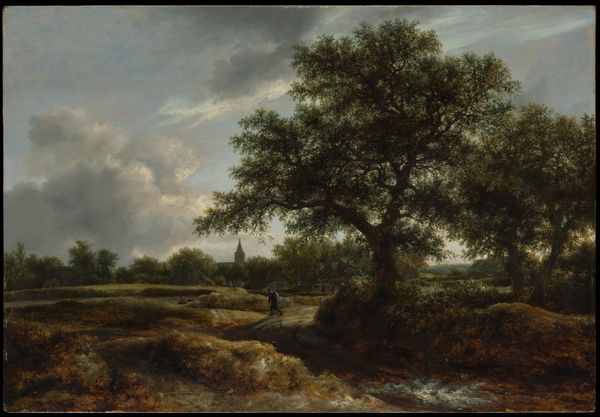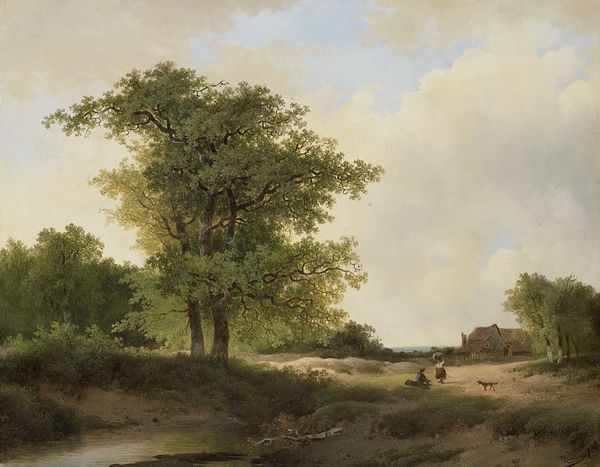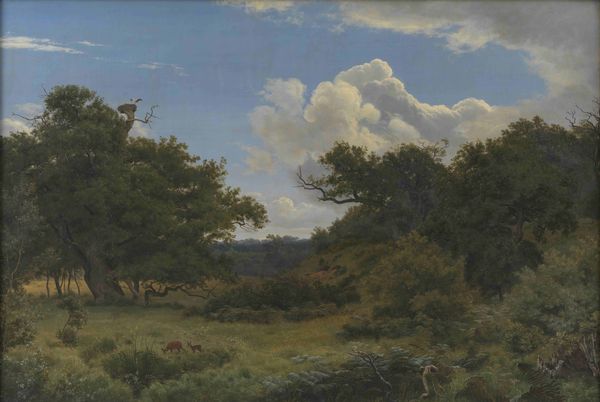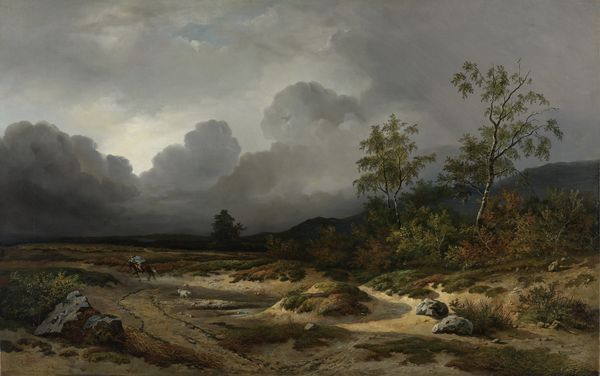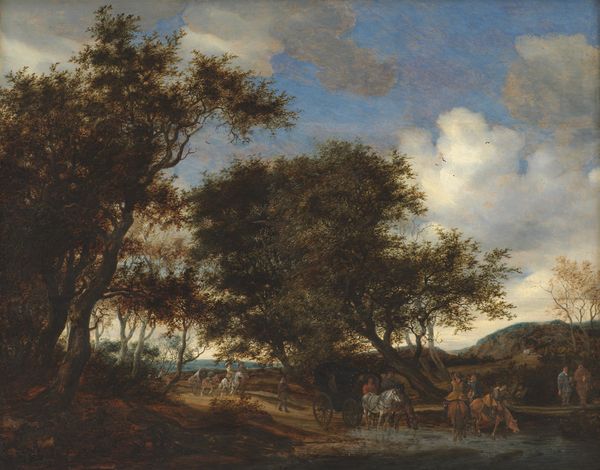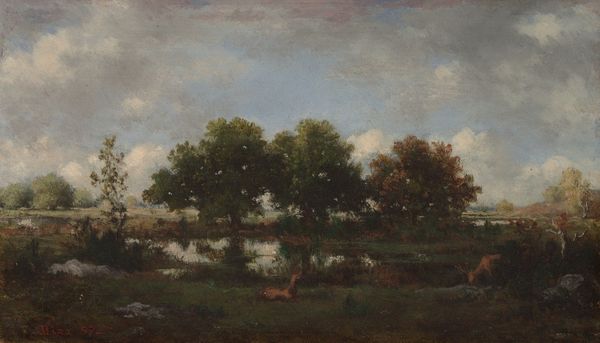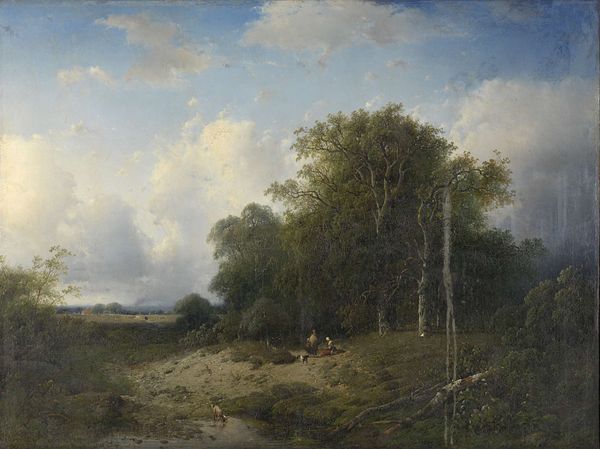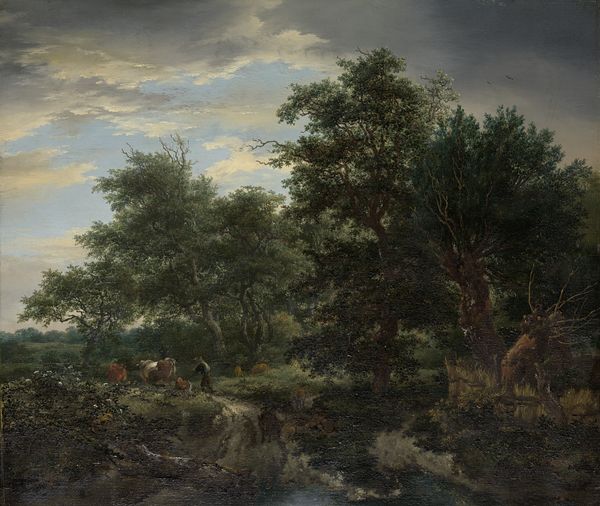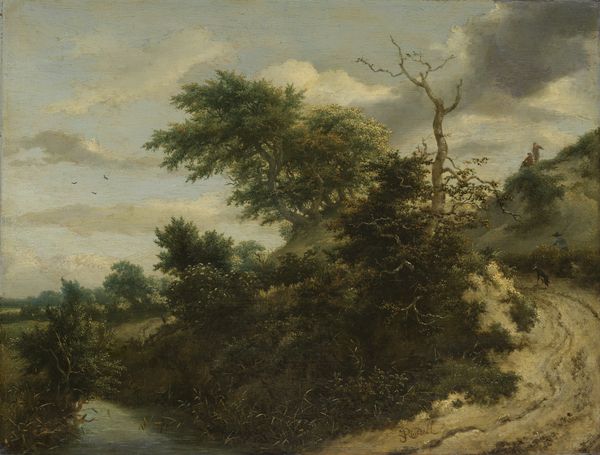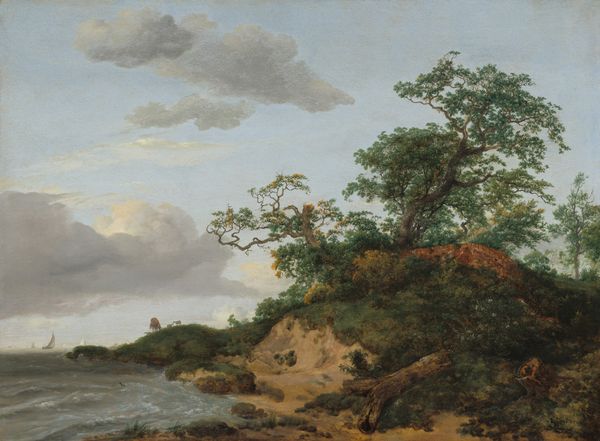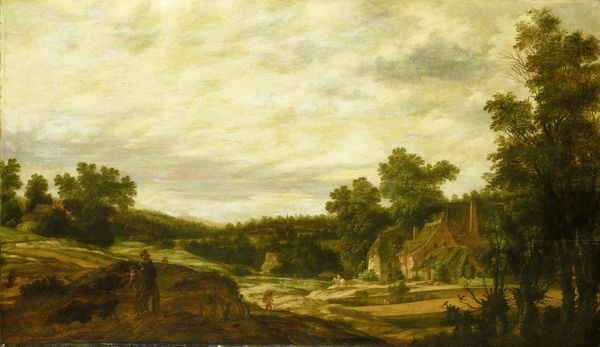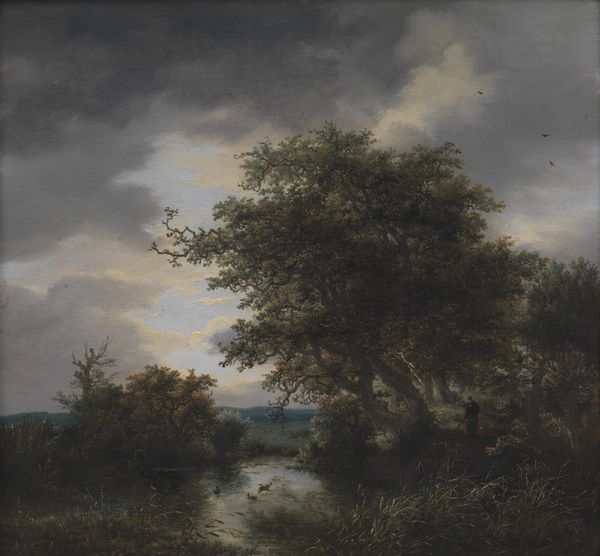
painting, oil-paint
#
dutch-golden-age
#
painting
#
oil-paint
#
landscape
#
charcoal drawing
#
forest
#
underpainting
#
realism
Dimensions: height 102.5 cm, width 152.5 cm, depth 13 cm, weight 29 kg
Copyright: Rijks Museum: Open Domain
Curator: "The Heath near Wolfheze," painted in 1866 by Johannes Warnardus Bilders. It's oil on canvas and part of the Rijksmuseum collection. What’s your immediate take? Editor: Oof, it feels like the end of summer, that moment right before the shift. The muted greens and looming grey sky—very contemplative, even a little melancholy. Like a sigh caught on canvas. Curator: It’s interesting you say that. Bilders was part of the Hague School, a group of Dutch realist painters who, consciously or not, reacted against the grandiose Romanticism of the preceding generation. They wanted to capture the genuine feel of the Dutch landscape and everyday life. Editor: Genuine... meaning a bit somber? I'm kidding, but there’s definitely an unvarnished quality to it. The figures are so small, almost swallowed by the landscape. It makes you think about scale, doesn’t it? Our place in… well, everything. Curator: Exactly! These artists were invested in a kind of national identity project. The Dutch Golden Age was long gone, and they were trying to establish a modern, but distinctly Dutch, artistic identity. Landscape became a vehicle to explore collective belonging and cultural memory. Editor: You know, looking at it, there’s this fascinating tension between the details—the individual leaves, the figures by the cart—and the overall hazy atmosphere. It's like memory itself—specific and blurred at the same time. Is that intentional, do you think? Curator: It aligns with the artistic trends of the time. Thinkers and artists were interested in the subjectivity of experience. Impressionism, of course, was just around the corner. This approach allowed Bilders to evoke a feeling of being in nature, not just depicting it. Editor: It's funny, isn’t it? We look at these “realistic” paintings now and find so much interpretation within them, when maybe at the time, it was just about getting it down exactly as it was. Still, a beautiful piece. I could lose myself in that landscape for hours. Curator: Me too. It speaks volumes about a particular moment in art history. Thank you. Editor: Indeed, thanks. It also is nice to appreciate that sense of time shifting as represented in art.
Comments
No comments
Be the first to comment and join the conversation on the ultimate creative platform.
